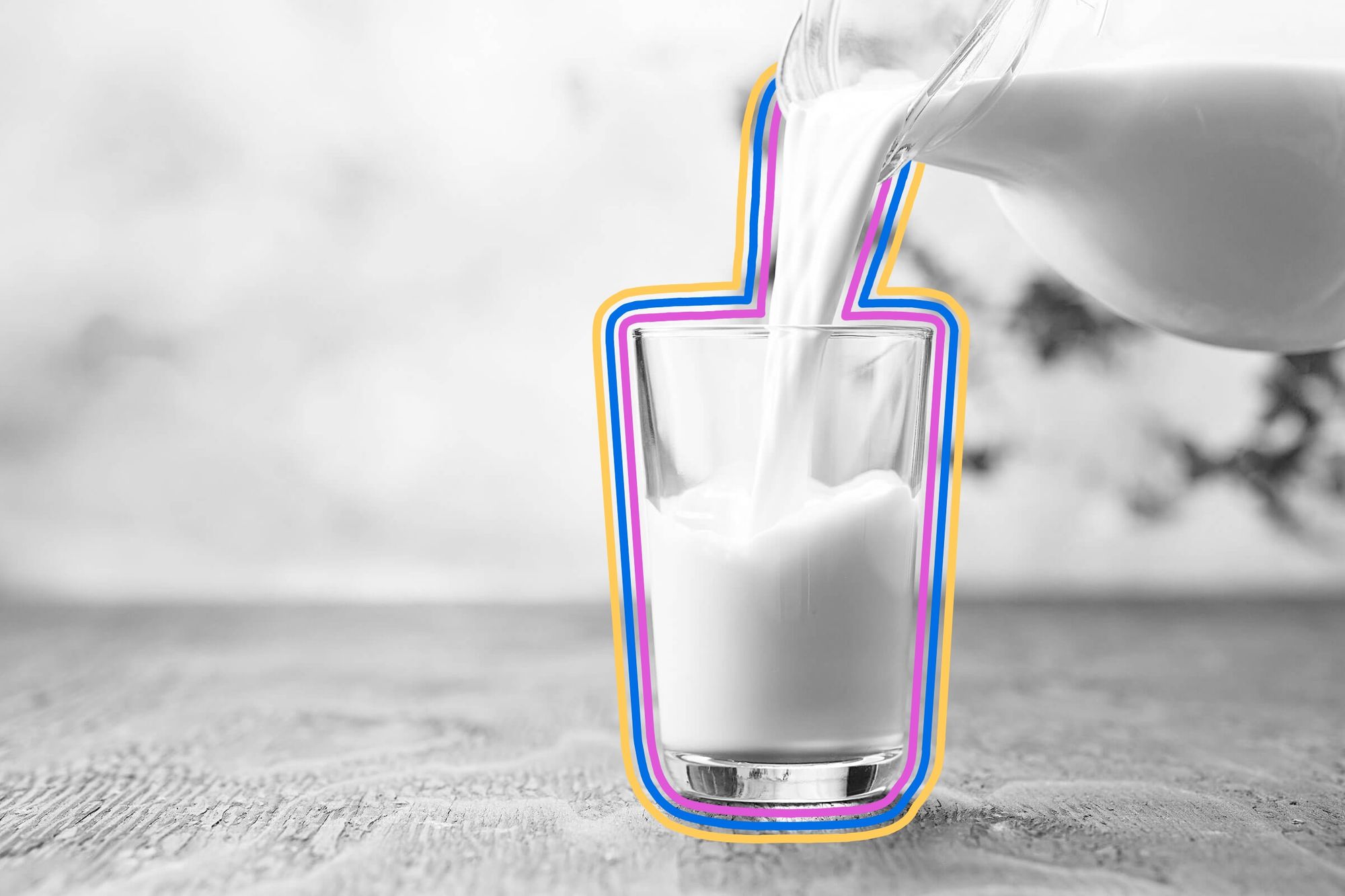

Milk plays a major part in human life — even for the most dedicated of vegans. Homo sapiens are biologically wired to be raised on our mother’s milk; the substance protects against short- and long-term illnesses while also sharing the mother’s antibodies with the newborn. Milk has also been the backbone of entire empires, and the substance even describes the very galaxy in which our planet resides. Here are seven amazing facts about milk (and its tasty plant-based alternatives) that’ll make you appreciate that carton in your fridge in a whole new way.
Milk Is Mostly Water

Although milk tastes much different than the H2O that comes out of the tap, the beverage is mostly water. Whole milk, for example, is 87% water, and the other 13% contains protein, fat, carbohydrates, vitamins, and minerals. Because of its high water content, milk is also a good hydration source during hot summer days. For all the talk of different milk types (whole, 2%, or skim), the difference in water content is only 3% at most.
Protein and Fat Content Is What Makes Milk White

Milk looks white because it’s reflecting all the wavelengths of visible light, and the combination of reflected colors creates white. The particles in milk — including the protein casein, calcium complexes, and fat globules — scatter light, much as light scattering on snow makes it appear white. Sometimes milk can have a slight yellow hue caused by a cow’s diet — the pigment carotene, found in carrots and other vegetables, can cause color variations — and the vitamin riboflavin can also cause a yellowish-green hue. Skim milk, which is low in fat content, can sometimes be a bluish color because casein scatters blue slightly more than red.
Humans Are the Only Mammals That Drink Another Animal’s Milk

Humans stand alone as the only mammals that drink the milk of another mammalian species. This is due to our history of animal husbandry, along with a genetic mutation that allows some humans to retain the enzyme lactase — which breaks down milk’s lactose sugar in the digestive system — beyond infancy. However, this mutation is not found in the majority of the 8 billion Homo sapiens on planet Earth — in fact, 68% of us experience some form of lactose malabsorption.
Although humans stand alone when it comes to mammals, some other species do drink milk from other animals. The red-billed oxpecker is known to steal milk from the udders of impala, and shorebirds such as seagulls have similarly swiped milk from the teats of elephant seals.
Milk Helped Build the Mongol Empire

The horse tribes of the Eurasian Steppes were one of the first cultures to adopt dairying, some 5,000 years ago. Because their vast plains weren’t fertile ground for agriculture, these nomadic tribes instead relied on animals and their milk for sustenance. Because they received much-needed calories from horse’s milk, these tribes could travel across land more quickly and maintain larger empires than their neighbors.
One of the remaining mysteries of milk’s importance in this era of human history is that 95% of Steppe people today lack the gene variant for digesting lactose, yet the population still gains a large portion of their calories from dairy products. One theory is that the microbiome found in the gut of Mongolians has somehow adapted to a millennia-long, dairy-heavy diet.
Dairy Milk Was Revolutionized by Bacteriology

In 1857, French chemist and microbiologist Louis Pasteur discovered that microorganisms in the air caused lactic acid fermentation, aka the souring of milk. Pasteur also discovered (after a request from Emperor of France Napoleon III) that certain microbes caused wine to go bad, but by briefly heating the libation to around 140 degrees Fahrenheit, those microbes died off, leaving behind a sterilized (or as it would be later known, “pasteurized”) liquid that would stay fresh for longer.
Pasteurization for milk wasn’t introduced until 1886, but it was a game-changer, as diseases introduced via contaminated milk killed scores of infants in the 19th century. With the introduction of pasteurization, that number dropped significantly.
Plant Milks Have Been Around for 5,000 Years

For years, dairy producers have sued alternative milk companies for using the word “milk” on their packaging — but history is not on their side. Evidence suggests that Romans had a complex understanding of the word “milk,” as the root of the word “lettuce” comes from “lact” (as in “lactate”). Many medieval cookbooks make reference to almond milk, and the earliest mention of soy milk can be found on a Chinese stone slab from around the first to third century CE. However, coconut milk has the longest history; archaeologists have recovered coconut graters among relics from Madagascar and Southeast Asia that date back to around 3000 to 1500 BCE.
Our Galaxy’s Name, “Milky Way,” Comes From a Greek Myth

The galaxy is home to hundreds of billions of stars, and stretches for truly mind-boggling distances. If you traveled the speed of light, it’d still take you 200,000 years just to cross its entirety. Its Western name — Milky Way — comes from a Greek myth in which the queen goddess Hera, while nursing the hero Heracles, pulled away her breast and sprayed her divine lactation across the cosmos. In fact, the root of the word “galaxy” is the Greek gála, meaning “milk.” The Romans also referred to the cosmos in Latin as Via Lactea, or “Road of Milk.” However, other cultures use different names to represent the great expanse of the starry sky. China, for example, calls it “銀河,” meaning “silver river,” and Sanskrit’s “Mandākinī” roughly means “unhurried.”
